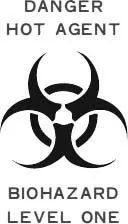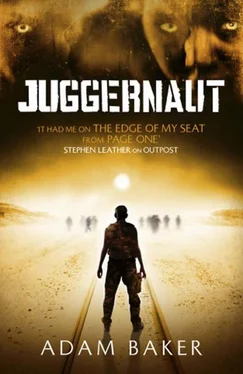‘Naturally, the primary purpose of the human field trials was to assess the pathology of the parasitic illness, to chart speed of infection, latency period, resistance to antibiotics. The usual tests that would be performed on any emerging pathogen. We also wanted to refine the disease. We wanted to capture the strongest, most lethal concentration we could distil. The best way to achieve that goal was to incubate the virus in a living host.’
‘You’ve done this before?’
‘Yes. During my time at Vektor. We were working with Ebola. Our acquisition team had secured samples during a virulent outbreak in the Republic of Congo. They were nominally UNHCO personnel on site to coordinate emergency relief, but in reality they were senior members of Biopreperat.
‘Swabs were sent to Moscow in a diplomatic pouch and we began to culture the virus in our level-four lab in the basement of the Koltsovo Health Institute, Siberia. We conducted exposure trials on guinea pigs and rats.
‘One of our support technicians, a young man named Karpov, was accidentally exposed to the virus while fixing the air-filtration system. He was working on a wall vent in one of the containment labs. He was tired. He was careless. He punctured his glove with a screwdriver as he opened an exhaust filter and cut open his hand. He quickly fell ill. We did what we could. Made every effort to treat the man. We had antiserum flown from the Ministry of Defence in Zagorsk. We dosed him with ribavirin and interferon. But his condition deteriorated.
‘He lasted two weeks. The disease liquefied his internal organs. He bled from his eyes, nipples, anus. We gave him transfusions, tried to keep enough blood in his veins to maintain circulation.
‘Escalating brain damage. A PhD in virology reduced to an imbecile. We kept him in a chemically induced coma, partly for his comfort, but mostly to silence his idiot grunts and moans.
‘The moment he was dead, his body was transported to our necropsy room. We harvested as much as we could. The samples of virus we drew from his lungs and liver were far more virulent than the original Congo strain. The process of incubating the disease in a live human host had somehow refined the pathogen and made it more aggressive.
‘Karpov’s body was soaked in chloramine and sealed in a steel box. I attended the funeral. As soon as the priest had finished his oration, a truck reversed to the graveside and smothered the coffin in concrete.’
‘We stopped work on the Congo strain of the virus the next day. We immediately began to study and weaponise the samples taken from Karpov. The new strain was named Ebola-K, in honour of its host. It was one of the most lethal pathogens we had in our vault.
‘The samples should have been destroyed. If Vektor complied with subsequent arms limitation treaties, their vast bank of bio-weapons would have been consigned to the furnace. But somehow I doubt it. I suspect Ebola-K remains in deep storage, frozen in nitrogen, waiting for the day it becomes tactically advantageous to decimate an enemy population.
‘That is the process we set in motion in the Western Desert. Human amplification.
‘We requisitioned twenty prisoners and kept them penned in a couple of freight containers deep within the mine. We planned to infect each man and watch the virus progress to full term. Then, when their blood and internal organs were rich with the viral load, we would dissect their bodies in an attempt to isolate and refine the pathogen.
‘The second containment would act as our factory floor. The virus could be freeze dried and milled to a powder. Then each particle could be electrostatically coated with a polymer shell that would protect it from the degrading effects of sunlight and extreme temperature fluctuation.’
‘Can this parasite sustain life outside a human?’
‘No. It will always seek out a host.’
‘How does our man get inside Lab Three?’ asked Koell.
‘There’s no point trying to shoot your way through the door. It’s inch-thick steel and ballistic glass.’
‘Key code?’
‘Automatically locked out the moment the contamination alert was tripped. Your man will need to bypass the mechanism entirely.’
The third containment. A steel door with a porthole.

Gaunt took a Bosch drill from his backpack. Compact, like an electric toothbrush.
He drilled out the lock panel. He levered the keypad. He stripped wires and shorted the mechanism. Crack. Spark. Magnetic bolts disengaged. He cranked handles and pulled the door open.
Blast of hot, humid air.
Glowing storage vats like fish tanks. Incubators. Gaunt wiped condensation. Arms. A torso. Sections of spine.
Sweat collected inside Gaunt’s gas mask. He shook his head, blinked perspiration from his eyes.
‘Lab Three was our main incubation chamber. There are tanks. Vats. Human body parts suspended in a rich growth medium. Synthetic plasmas. We called them milk shakes.’
‘And the result?’
‘You can’t farm this material. It will not thrive under artificial conditions. It will only exist in symbiosis with a living, thinking host.’
‘How many test subjects did you use for the terminal trials?’
‘All of them. Then we ordered twenty more.’
‘There will be no come-backs for the programme?’
‘We infected every prisoner with this disease. They must be long dead by now. The soldiers that escorted them from southern internment camps were given plates of food, and shot in the back of the head as they ate. Thousands of young men were killed in this war. A generation wiped out. Entire platoons missing in action, shovelled into mass graves in some god-forsaken corner of the desert. The men that died in that valley will never be traced.’
‘It all went as planned?’
‘At first the prisoners were docile. They were kept corralled in freight containers. Bare enclosures with a single shit-bucket. The containers had been carried into the mine by crane truck and dumped at the end of a wide tunnel.
‘We subjected the prisoners to long hours of darkness, then sudden blinding light. We played rock music and white noise. Petty torments to keep them disoriented.
‘We gave them basic food and water. The men assumed they were being kept for some kind of work detail. It was not uncommon for deserters and criminals to be used for hazardous operations such as mine clearance or the deactivation of unstable munitions.
‘Once we were done with Hassim we selected our next test subject.
‘I asked Jabril, the Iraqi intelligence officer running the camp, to make the selection. He made all our selections. He seemed to enjoy the process.
‘We had welded bars at the entrance of each freight container. He would stand in front of these makeshift pens and observe the prisoners, enjoy the power of life and death. It was as if he was visiting a seafood restaurant and choosing a lobster from a tank.
‘Number eight. I don’t know his name. He was the first to be chosen. We escorted him to Lab One. He began to struggle and shout as he entered the lab and saw the necropsy table and surgical instruments laid out. The sound of his screams echoed down nearby tunnels. His companions heard the commotion.
‘It took six men to drag him to the table and strap him down. We introduced the parasite into his bloodstream by subcutaneous injection and monitored the spread of infection.
‘After that, we adopted a different routine each time we removed a test subject from the cells. We discovered, among the clutter of cuffs, chains and other prison equipment Jabril had requested from his contacts in the secret police, that we had been supplied with a tranquilliser pole. A crude spear with a hypodermic at the end. The kind of device zookeepers push through the bars of a cage to sedate a dangerous animal. It enabled us to drug our chosen subject with a Thorazine and Largactil cocktail, and remove him from their freight container cell with very little resistance. The doped prisoner would then be cuffed. We would pull a hood over his head. Our subjects were semi-conscious. Docile, but responsive to commands. Much easier to manage.’
Читать дальше













